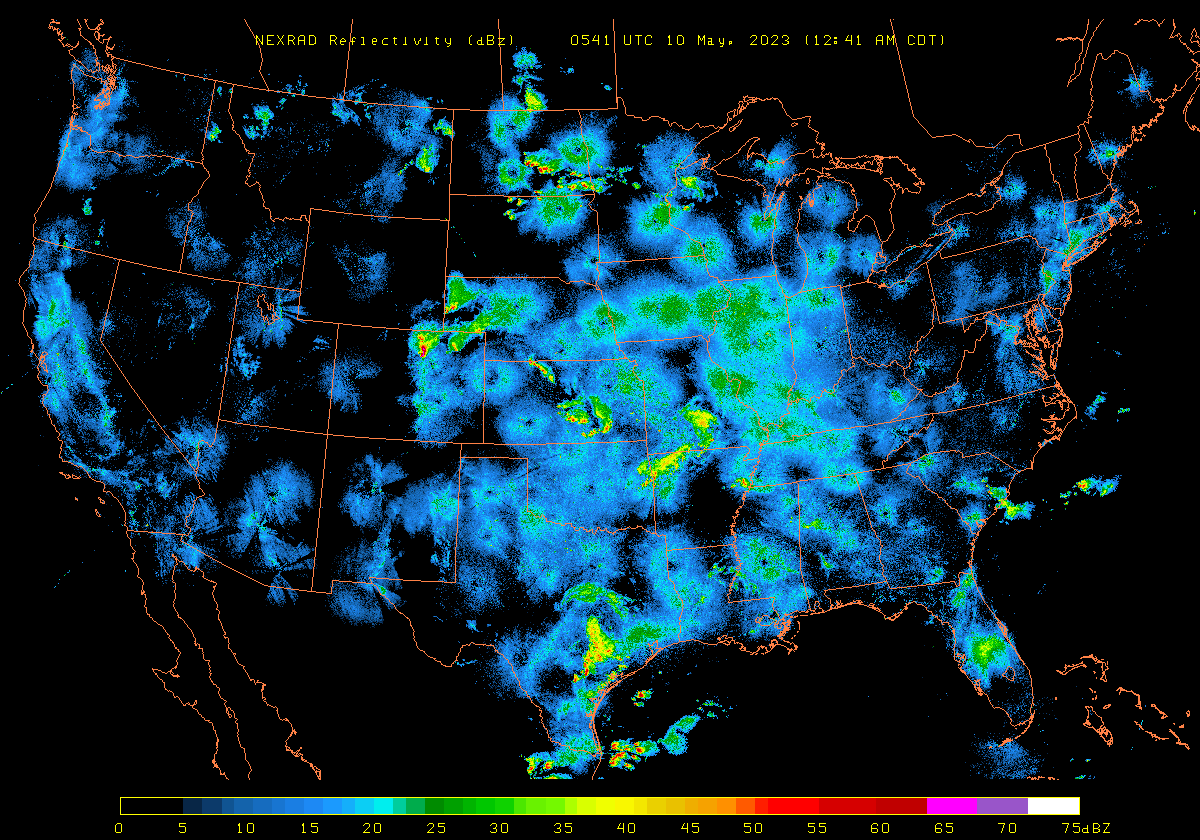Our research toolkit
We believe in tackling questions about animal migration from a diversity of perspectives, disciplines, and scales. Our research integrates field, lab, and computational approaches. Some of our most commonly used research methods include the following:
Acoustics
Listening in on migration
Many bird species vocalize during migratory flights, and we use microphones to record and monitor their movements. Acoustics allow us to monitor populations in the face of ongoing environmental change and study poorly-understood species interactions during migration. Nighthawk is our neural network model for detecting and identifying the vocalizations of migrating birds in flight. We have demonstrated that automated monitoring approaches can accurately capture the magnitude and species composition of bird migration (Van Doren et al. 2023 J Applied Ecology).
An acoustic monitoring station in Chicago, Illinois.
Radar
Movements in real-time
We use radars to track organisms moving through the atmosphere at fine spatial and temporal scales. Our research primarily uses data from the United States’ network of 143 Doppler weather surveillance radars (NEXRAD), which scan the atmosphere every 5-10 minutes. We can use NEXRAD to study both local bird behavior (Van Doren et al. 2017 PNAS) and continent-scale phenomena (Van Doren and Horton 2018 Science). We also plan to incorporate smaller, portable radars into our research.
The NEXRAD network on 10 May 2023 at 12:41 AM CDT. This image shows about 60 million birds in flight over Illinois.
Tracking
Individuals on the move
Individual tracking data are valuable for studying a range of phenomena, including decision-making, survival, communication, and responses to the built environment. We use light-level geolocators and other devices to obtain behavioral data from migrating individuals. As hardware improves, we are always looking to apply the latest technology in tracking studies.
A male Eurasian Blackcap carrying a light-level geolocator.
Citizen science (community science)
Crowdsourced observations worldwide
Repositories of crowdsourced observations from community scientists are an increasingly important tool in ecology. We primarily use the eBird database, which contains over one billion bird observations globally. We also work with data products derived from primary datasets, such as eBird Status & Trends. Citizen science data can form the foundation of a project or provide valuable context for other data modalities, including acoustics and tracking.
Abundance distribution of Gray-cheeked Thrush from eBird Status & Trends, modeled using crowdsourced observations.
Computation
Machine learning and modeling
We use a variety of computational approaches to integrate data from multiple modalities and model animal movements. Machine learning approaches underly much of our research, including migration forecasting, radar processing, and automated bioacoustics. We frequently collaborate with computer scientists to develop new approaches (e.g., Fuentes et al. 2023 Methods in Ecology and Evolution).
Nighthawk is our neural network used for monitoring vocalizations of migrating birds in flight.





